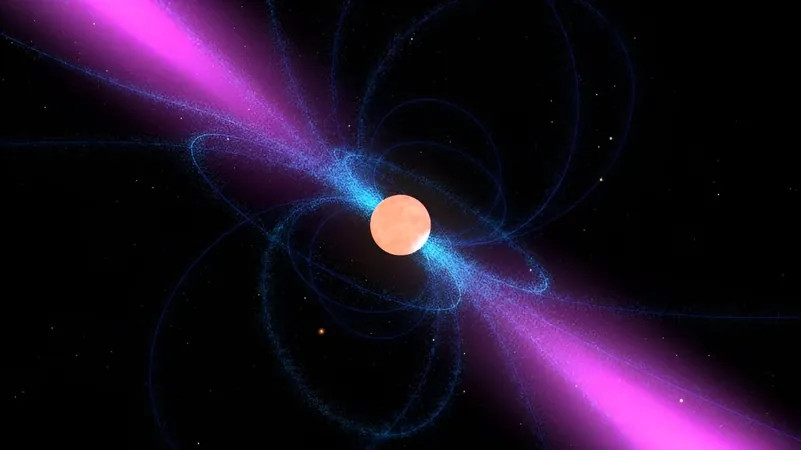
LIGO's Quest for Continuous Gravitational Waves from Pulsars: A New Challenge
2025-01-13
Author: Yu
Introduction
In a groundbreaking achievement in February 2016, scientists from the Laser Interferometer Gravitational-Wave Observatory (LIGO) first confirmed the existence of gravitational waves (GWs), which are ripples in the fabric of spacetime resulting from cataclysmic events like black hole or neutron star collisions. These discoveries, rooted in Einstein's Theory of General Relativity, opened up an exciting new frontier in astrophysics, paving the way for what is now known as GW astronomy.
The Search for Continuous Gravitational Waves
In their latest venture, members of the LIGO-Virgo-KAGRA (LVK) Collaboration recently embarked on an ambitious search for continuous gravitational waves (CWs) emitted by 45 well-known pulsars. These pulsars, which were first discovered in 1967, are rapidly spinning neutron stars that emit beams of electromagnetic radiation, similar to a lighthouse. Their consistency and reliability make them promising candidates for CW detection, offering insights into their internal structure and the fundamental physics described by General Relativity.
Results and Implications
Despite the highly anticipated search, the results were disappointing—no evidence of CWs was detected. However, the findings were not without merit. The study established important upper and lower limits on the signal amplitude, an achievement that could enhance the sensitivity of future investigations. The team leveraged three distinct data analysis techniques and explored two different emission models, yielding valuable implications for ongoing and future research projects in gravitational wave astronomy.
The LVK Collaboration's Ongoing Efforts
The LVK Collaboration, which combines the observational power of LIGO's twin facilities with the Virgo Observatory in Italy and Japan's KAGRA detector, aims to provide a comprehensive understanding of gravitational waves. Their latest research efforts, highlighted in their paper titled "Search for continuous gravitational waves from known pulsars in the first part of the fourth LIGO-Virgo-KAGRA observing run," showcases the collective effort of hundreds of scientists from universities and institutes across the globe.
Future Prospects
LIGO's findings not only reflect the current challenges in detecting CWs but also contribute crucial information for future searches. For 29 of the pulsars observed, the team surpassed the theoretical spin-down limit, indicating an improved sensitivity compared to past searches. The results from this study may assist in guiding future efforts, as a complete analysis of the complete fourth observing run dataset is expected to boost the chances of discovering these elusive continuous signals.
Conclusion
As researchers continue to refine their techniques and enhance sensitivity, the dream of detecting continuous gravitational waves from pulsars remains alive. The field of GW astronomy is evolving rapidly, and every failed search pushes the boundaries of our understanding, setting the stage for future triumphs. Keep your eyes peeled—who knows what astonishing discoveries lie just beyond the horizon!
 Brasil (PT)
Brasil (PT)
 Canada (EN)
Canada (EN)
 Chile (ES)
Chile (ES)
 Česko (CS)
Česko (CS)
 대한민국 (KO)
대한민국 (KO)
 España (ES)
España (ES)
 France (FR)
France (FR)
 Hong Kong (EN)
Hong Kong (EN)
 Italia (IT)
Italia (IT)
 日本 (JA)
日本 (JA)
 Magyarország (HU)
Magyarország (HU)
 Norge (NO)
Norge (NO)
 Polska (PL)
Polska (PL)
 Schweiz (DE)
Schweiz (DE)
 Singapore (EN)
Singapore (EN)
 Sverige (SV)
Sverige (SV)
 Suomi (FI)
Suomi (FI)
 Türkiye (TR)
Türkiye (TR)
 الإمارات العربية المتحدة (AR)
الإمارات العربية المتحدة (AR)